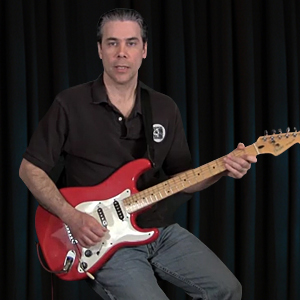Description
After learning and playing a good number of songs, music students will notice that certain chord progressions keep being used over and again. Many times I've heard the question, "Why do we use these three chords, I, IV, V, as the standard chord progression?" In order to understand the answer to this we need an overview of Functional Harmony.
Let's take a step back, start at the very beginning and check our premises.
Why do we bother to change chords at all in a song? Why not simply use one chord all the way through? It's possible to do, after all; and some songs actually do this. The reason we change chords and use more than one in a song is to provide variety and thereby make the music sounds as if it going somewhere. Hopeful somewhere purposeful. Once you truly understand that answer, it can help a great deal in making different chord progressions and thereby make your playing much more richly detailed and beautiful.
Functional Harmony is the science of understanding how changing chords can suggest goal-directed motion in music.
Building a chord on each note of the major scale results in the standard series of major and minor chords that are identified by Roman numerals:
Each of these chords has a specific function as follows:
Baroque, Classical, Romantic & Modern music - all follow this basic outline of Functional Harmony regarding chord progressions:
Tonic, then Intermediate, then Sub-dominant, then Dominant, return to Tonic.
This can, for example, be reduced to:
Tonic, Dominant, Tonic
Dominant, Tonic
Tonic, Intermediate, Dominant, Tonic
Tonic, Sub-dominant, Dominant, Tonic
In any of these cases, notice the primary goal is always the proper cadence:
Dominant, Tonic
It is also possible to prolong the progression, for example:
Tonic, Intermediate, Tonic, Sub-dominant, Intermediate, Dominant, Tonic.
Notice the goal remains the same: the Dominant to Tonic motion called a cadence. It is of course possible to not use the Dominant - Tonic resolution in a song (or part of a song). This is a useful effect in it's own right. It can make the music sound more open-ended, or ongoing. Or even restless or wandering, due to not having a proper resolution as a "resting point" or end goal.
Further, much music makes use of a structure called half-cadence and full-cadence. This works as follows:
Tonic --> Dominant is a half-cadence.
Tonic --> Dominant --> Tonic is a full-cadence.
Examples include everything from simple nursery rhymes, to classical masterpieces, to jazz standards, to modern pop tunes.
To answer the original question, many songs use I-IV-V chord progressions in order to make use of the basic principles of Functional Harmony:
I (Tonic) --> IV (Sub-dominant) --> V (Dominant) --> I (Tonic)
The result can be described as such:
I (Tonic) - "This is where we start from."
IV (Sub-dominant) - "This is where we go somewhere new, looking for something else or trying something new. Tension is being built."
V (Dominant) - "This is where we build the most tension, we are far from home on our journey."
I (Tonic) - "This is where all the tension is resolved. We've returned home to a familiar place from our journey to far away, new different places."
From here we need to understand the concept of secondary dominant.
